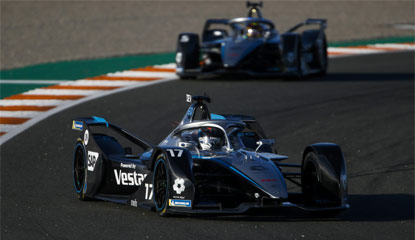Introduction
When it comes to automotive technology, we often think about advancements in engine performance, safety features, and entertainment systems. However, one crucial aspect that has seen remarkable evolution is automotive lighting technology. From the traditional halogen headlights to the energy-efficient LED and beyond, lighting has become not just a functional component but a design statement and a safety feature in modern vehicles.
In this blog post, we’ll embark on a journey through the history of automotive lighting technology, exploring the reasons behind the shift from halogen to LED headlights, and peering into the future to see what exciting innovations lie ahead.
The Halogen Era: A Bright Beginning
The halogen bulb was a game-changer when it was introduced to automotive lighting in the early 1960s. Before halogen, incandescent bulbs were commonly used in cars. While they provided light, they were inefficient and generated a significant amount of heat.
Halogen bulbs, on the other hand, were much more efficient. They produced a brighter and whiter light while consuming less power. This made them a safer and more practical choice for headlights. The halogen era marked the beginning of the transition towards brighter and more reliable automotive lighting.
Enter Xenon: The HID Revolution
As technology continued to advance, another breakthrough occurred with the introduction of High-Intensity Discharge (HID) headlights, also known as xenon headlights. Xenon bulbs produced an even brighter and more intense light than halogen, making night driving significantly safer. They were also more durable and had a longer lifespan than their halogen counterparts.
One notable feature of HID headlights was their distinctive blue-white light, which not only improved visibility but also added a touch of luxury to high-end vehicles. The introduction of HID headlights marked a significant step forward in automotive lighting technology, particularly for premium and luxury car manufacturers.
The LED Revolution: Efficiency and Customization
While HID headlights were a substantial improvement over halogen, they were not without their drawbacks. HID bulbs required a warm-up period to reach full brightness, and their intense light could sometimes blind oncoming drivers if not properly adjusted. These challenges paved the way for Light Emitting Diode (LED) headlights to take the spotlight.
LED headlights quickly gained popularity due to their numerous advantages. They offered instant full brightness, which improved safety by providing immediate visibility. LEDs were also highly energy-efficient, helping to reduce fuel consumption in vehicles. Additionally, they had a longer lifespan, reducing the need for frequent bulb replacements.
Beyond these practical benefits, LED headlights opened up new possibilities for automotive design. Automakers could now incorporate intricate lighting patterns and signature styles into their vehicles’ front-end designs. The customizable nature of LED technology allowed for a unique and recognizable brand identity through lighting.
Adaptive Headlights: Enhancing Safety
As LED technology continued to advance, another innovation emerged – adaptive headlights. These headlights are designed to adjust their beam pattern in response to the vehicle’s speed, steering angle, and road conditions. By doing so, they provide better illumination in curves and corners, significantly improving nighttime visibility and safety.
Adaptive headlights are equipped with sensors and actuators that can move the headlight beam horizontally and vertically. This dynamic adjustment ensures that the light is directed precisely where it’s needed, reducing glare for oncoming drivers and enhancing the driver’s view of the road.
The Future: Beyond LEDs
While LED headlights have become the standard in modern vehicles, the world of automotive lighting technology continues to evolve. What can we expect in the near future?
OLED Technology: Organic Light Emitting Diode (OLED) technology is making its way into automotive lighting. OLEDs offer even more design flexibility and can create intricate lighting patterns, giving car designers a new canvas to work with.
Matrix LED Headlights: Matrix LED headlights are an evolution of adaptive headlights. They consist of an array of individually controlled LEDs that can be turned on or off as needed to create custom lighting patterns. This technology allows for improved visibility while reducing glare for other road users.
Laser Headlights: Laser headlights are on the horizon, promising even brighter and more focused beams of light. While laser headlights are still in the experimental stage, they hold the potential to revolutionize automotive lighting further.
Connected Lighting: With the rise of autonomous and connected vehicles, lighting will play a crucial role in communication between vehicles and pedestrians. Smart lighting systems can convey information such as a vehicle’s intentions to turn or stop, enhancing safety on the road.
Conclusion
The journey of automotive lighting technology from halogen to LED and beyond has been a remarkable one. It’s not just about brighter and more energy-efficient headlights; it’s about safety, design, and innovation. As we look to the future, we can expect even more exciting developments in automotive lighting, further enhancing our driving experience and road safety.
So, whether you’re driving a classic car with halogen bulbs or a state-of-the-art vehicle with advanced LED headlights, remember that automotive lighting is more than just a practical feature; it’s a testament to human ingenuity and the desire to make our journeys safer and more stylish.






